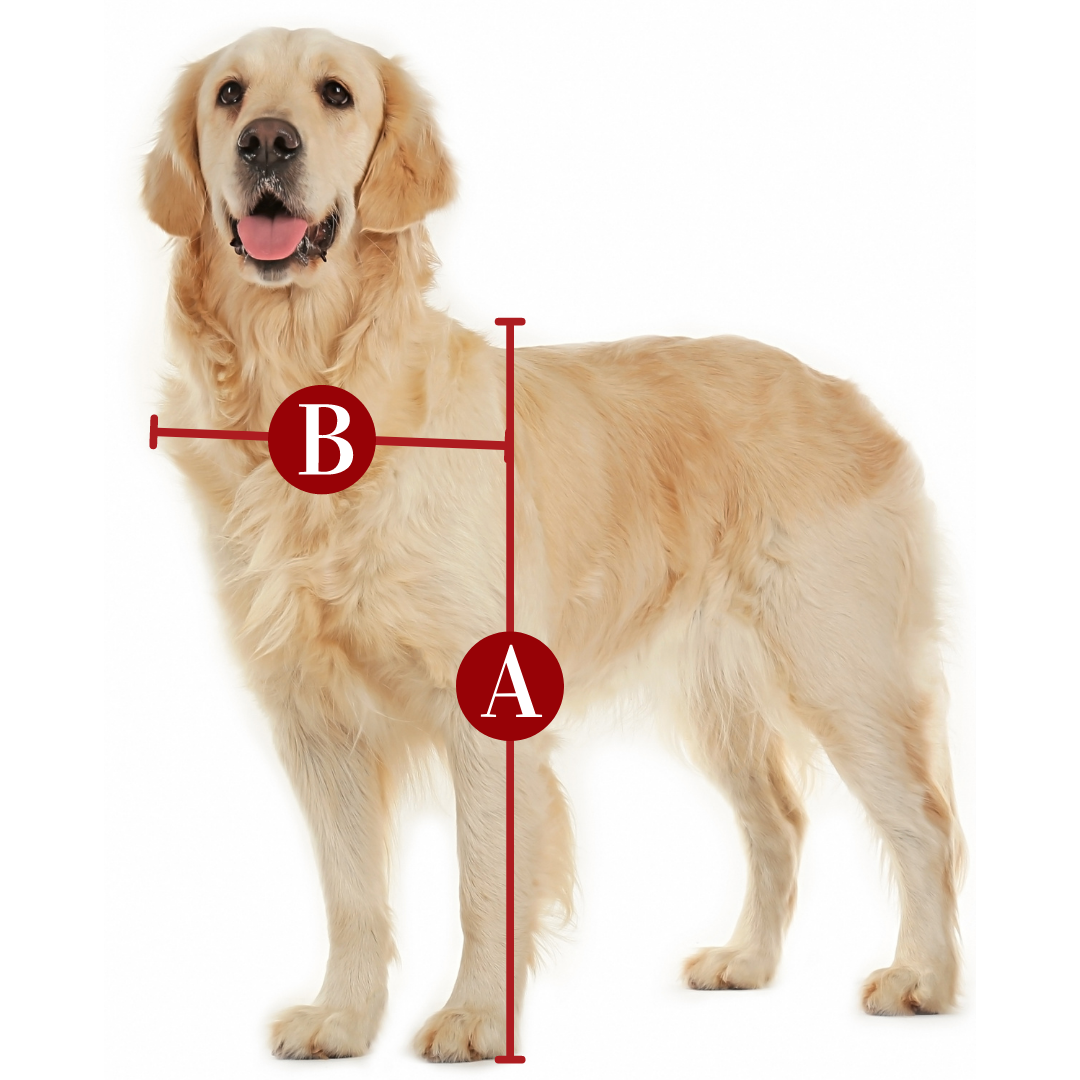Find The Best Pet Door Size For My Pet

Where To Install:




A
inchesB
inchesPlease fill the above fields.
-
Door
Liberty Pet Door
1-17
6
Small
https://libertypetdoor.com/products/door?variant=44639465767141
-
Door
Liberty Pet Door
9-23
8
Medium
https://libertypetdoor.com/products/door?variant=44639465865445
-
Door
Liberty Pet Door
9-29
10
Large
https://libertypetdoor.com/products/door?variant=44639465963749
-
Door
Liberty Pet Door
9-37
12
Extra Large
https://libertypetdoor.com/products/door?variant=44639466062053
-
Wall
Liberty Pet Door
1-17
6
Small
https://libertypetdoor.com/products/wall?variant=44639467208933
-
Wall
Liberty Pet Door
9-23
8
Medium
https://libertypetdoor.com/products/wall?variant=44639467405541
-
Wall
Liberty Pet Door
9-29
10
Large
https://libertypetdoor.com/products/wall?variant=44639467602149
-
Wall
Liberty Pet Door
9-37
12
Extra Large
https://libertypetdoor.com/products/wall?variant=44639467798757
-
Sliding Glass Door
Liberty Pet Door
9-16
5
Small
https://libertypetdoor.com/products/vinyl-panel
-
Sliding Glass Door
Liberty Pet Door
9-22
7
Medium
https://libertypetdoor.com/products/vinyl-panel?variant=44900907417829
-
Sliding Glass Door
Liberty Pet Door
9-33
9
Large
https://libertypetdoor.com/products/vinyl-panel?variant=44900907811045
-
Sliding Glass Door
Liberty Pet Door
9-39
11
Extra Large
https://libertypetdoor.com/products/vinyl-panel?variant=44900908171493
-
Sliding Glass Door
Liberty Pet Door
9-44
13
Giant
https://libertypetdoor.com/products/vinyl-panel?variant=44900908499173
-
Sliding Glass Door
Liberty Pet Door
9-16
5
Small
https://libertypetdoor.com/products/aluminum-slider?variant=44900893229285
-
Sliding Glass Door
Liberty Pet Door
9-22
7
Medium
https://libertypetdoor.com/products/aluminum-slider?variant=44900893917413
-
Sliding Glass Door
Liberty Pet Door
9-28
9
Large
https://libertypetdoor.com/products/aluminum-slider?variant=44900894703845
-
Sliding Glass Door
Liberty Pet Door
9-35
11
Extra Large
https://libertypetdoor.com/products/aluminum-slider?variant=44900895424741
-
Sliding Glass Door
Liberty Pet Door
9-40
13
Giant
https://libertypetdoor.com/products/aluminum-slider?variant=44900896145637
-
Window
Liberty Pet Door
9-15
5
Small
https://libertypetdoor.com/products/sash-white
-
Window
Liberty Pet Door
9-21
7
Medium
https://libertypetdoor.com/products/sash-white?variant=44900945330405
-
Window
Liberty Pet Door
9-27
9
Large
https://libertypetdoor.com/products/sash-white?variant=44900945985765
-
Window
Liberty Pet Door
9-16
5
Small
https://libertypetdoor.com/products/white-window?variant=44900923015397
-
Window
Liberty Pet Door
9-22
7
Medium
https://libertypetdoor.com/products/white-window?variant=44900924489957
-
Window
Liberty Pet Door
9-28
9
Large
https://libertypetdoor.com/products/white-window?variant=44900925702373
-
Sliding Glass Door
Liberty Pet Door
9 - 13
6
Original
https://libertypetdoor.com/products/cat-slider?variant=45510282543333
-
Window
Liberty Pet Door
9 - 13
6
Original
https://libertypetdoor.com/products/cat-sash?variant=45510296043749
-
Window
Liberty Pet Door
9 - 13
6
Original
https://libertypetdoor.com/products/cat-window?variant=45510322225381
How To Measure Your Dog for A Pet Door
Choosing the right pet door is essential for the comfort and safety of your pet. A properly sized pet door ensures ease of access and prevents injury, making it vital for pet owners to measure their pets accurately before making a purchase.
This comprehensive guide will walk you through the process step by step, providing tips and answering frequently asked questions to help you select the perfect pet door.
How Do I Know Which Size Flap Is Right For My Pet?
You might be wondering what size flap is perfect for your pet based on their weight. After all, we usually measure pet size based on how heavy they are! However, pet weight has nothing to do with pet door size.
Instead, you will need to determine your pet’s dog door size based on their height.

A properly fitted pet door will be at least 1” higher than the tallest point of your dog’s back. If the pet door is any shorter, then your dog will scrape their back along the top edge as they use it, which can seriously hurt your dog in the long run. It’s vital that there is at least 1” space between your dog’s back and the top of the flap.
But that does not mean you need a really tall flap. You need to take into consideration your step-over height.
Your step-over is the distance between the bottom of the pet door frame and the floor. Your dog has to step-over it in order to go through the flap. Taller dogs can comfortably use a taller step-over. If you have a shorter dog or cat, or have a pet with mobility difficulties, a shorter step-over will be necessary.
Tip: A minimum 3” step-over is typically needed to maintain the structural integrity of your door or wall.
All together, that means that the total height of your pet door– from the floor, step-over, and top edge of the flap–should be at least 1” taller than the tallest point of your dog’s back.
How to Measure Your Pet for a Pet Door
1) Measure Your Dog’s Height
- Position your pet standing upright.
- Measure from the floor directly to the highest point on their back, which could be the shoulders, mid-back, or tailbone.
2) Measure Your Dog’s Width
- Using the same tape measure, measure how wide your dog is from shoulder to shoulder.
- You can test your measurement by opening a door the same distance and having your dog walk through it.
3) Find Your Step-Over Height
- To maintain the integrity of your pet door, the step-over should be at least 3”
- Your max step-over height should not exceed a third of your dog’s height.
- Find a height between the minimum and the maximum your dog can comfortable step over. You can test this by having your dog step over various obstacles of the corresponding heights.
- Tip: Dogs lose mobility as they age, so to ensure your pet can use their pet door for as long as possible, do not make your step-over too tall.
4)Compare To The Size Chart & Find Step-Over
- Compare your measurements to the Liberty Pet Door size chart:
- Find the size with the height that, when combined with your step-over, is the closest to your dog’s height.Check that the width is bigger than your dog’s width. If the nearest height is too narrow for your dog, go up a size.
5) Double Check Your Measurements
- To check if you have the right size, you can test how comfortable it will be for your dog to use by making a mock-up.
- Cut a hole in a piece of cardboard that is the same dimensions as the pet door flap you want. Make sure it has the same step-over.
- Have your dog walk through the cardboard. Adjust the step-over or flap size depending on how easily they can use it.

Tips and Tricks:
- For homes with multiple pets, measure the widest and tallest pet to ensure the door accommodates all your furry friends. Make sure the flap is tall enough for your biggest pet while the step-over is low enough for the shortest pet.
- Consider future ease of access. A low step-over is beneficial as your pet ages or if they develop mobility issues.
- Remember to account for the difference in floor levels between indoors and outdoors, especially if your backyard or patio is lower than your home's floor level.
FAQs

How do I know if my measurements are correct?
Compare your measurements to the size chart of the pet door you're considering. Ensure the flap's top is at or above your pet’s withers, the width is adequate for your pet to pass through comfortably, and the step-over is manageable.
What if my pet is between sizes?
It’s better to choose a larger size to ensure your pet can use the door comfortably throughout their life, especially as they grow or age.
Can I adjust the step-over height after installation?
The Liberty Pet Doors for sliding glass doors have an adjustable spacer that allows you to change the step-over height on your panel. For door and wall installations, you are going to need to repair the hole and make a new one to change the step-over.
What if my pet is scared to use the new door?
Use positive reinforcement, like treats and praise, to encourage your pet to use the door. Start by propping the flap open and gradually lower it as your pet becomes more comfortable.
Are pet door sizes standardized across brands?
No, sizes can vary significantly between brands. Always refer to the specific measurements provided by the manufacturer.
